Miner's Castle and Beach
Station 2 and Station 3
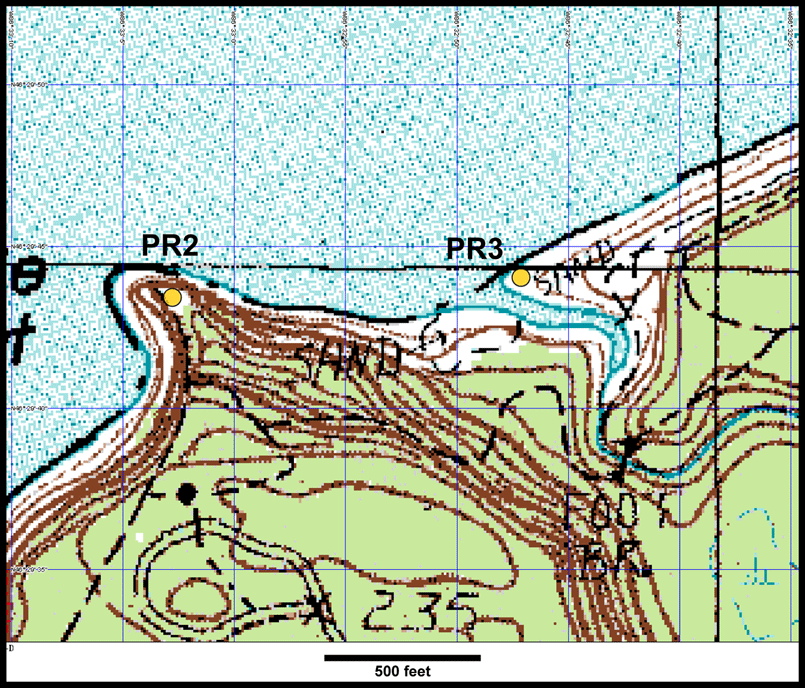
Miner's Castle is to the west while Miner's Beach is to the east.
First we will focus on Miner's Castle, which is the type locality for the Miner's Castle member of the Munising Formation.
Then, we will move to Miner's Beach where we will find the exposed Chapel Rock member of the Munising Formation.
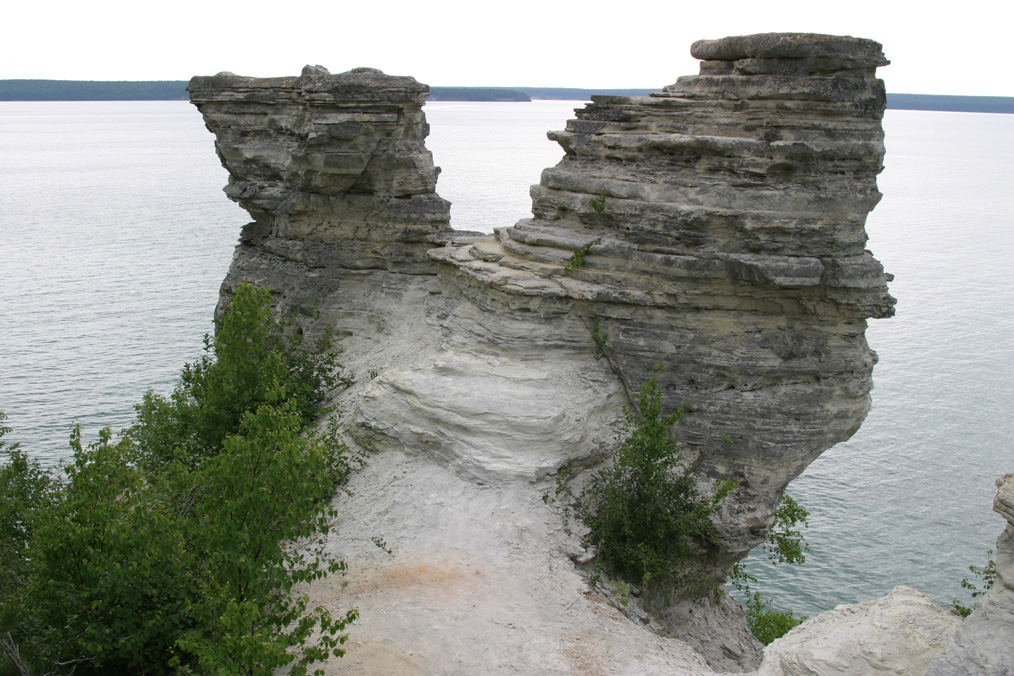 (A)
(A)
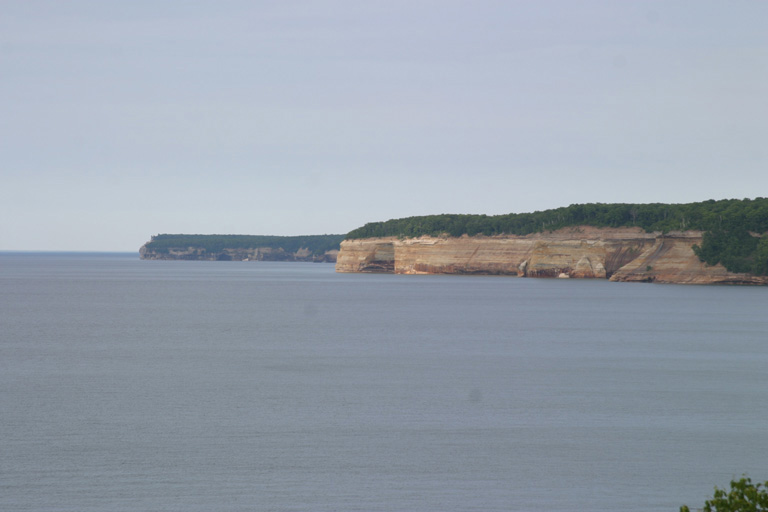 (B)
(B)
Miner's Castle
The photo to the left (A) is Miner's Castle. It is a sandstone belonging to the Munising Formation, preserved from the Late Cambrian.
According to the NPS Park Geology section of their website, this sandstone is a soft, crumbly quartz sandstone with an abundant garnet content. It is about 140 feet thick and is poorly sorted. Erosion over time has created these towers of sandstone in which gives this place its name.
The view from Miner's Castle is spectacular. The video (LINK) below provides a complete panoramic view of the observation deck at Miner's Castle.
Photo B shows us the Pictured Rocks cliffs of resistant sandstone, just east of Miner's Castle.
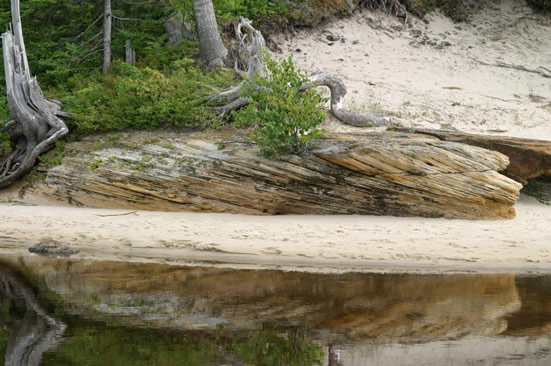
Miner's Beach
In the photo to the left is an example of thickly bedded cross bedding. There are many spectacular views and examples of this along Miner's Beach. The Chapel Rock Formation is exposed across the stream, in which we see here.
Video?
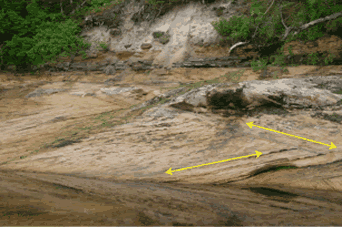
Notice in the photo to the right the cross bedding is truncated and switching directions. Click on the photo for a closer view and without the arrows . The river you see in the photo is on the west end of the beach flowing into the Lake Superior.
The cross beds here and the cross laminations at Munising Falls can tell a lot about the environment in which they formed. Watch the video below? for a detailed explanation. (why are these crossbeds larger than in other places)
Video?????
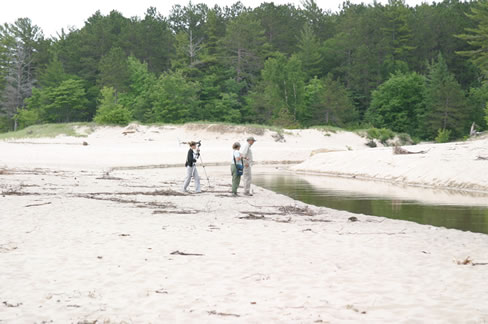
In the photo to the left, Larry, Ginny and Jill are observing ripples form in the Miner's River. Click on the photo to see what they are observing.
The sand here is a very coarse, clean quartz sand which suggests a high energy locality.
Click here to learn about the formation of ripples and cross beds.
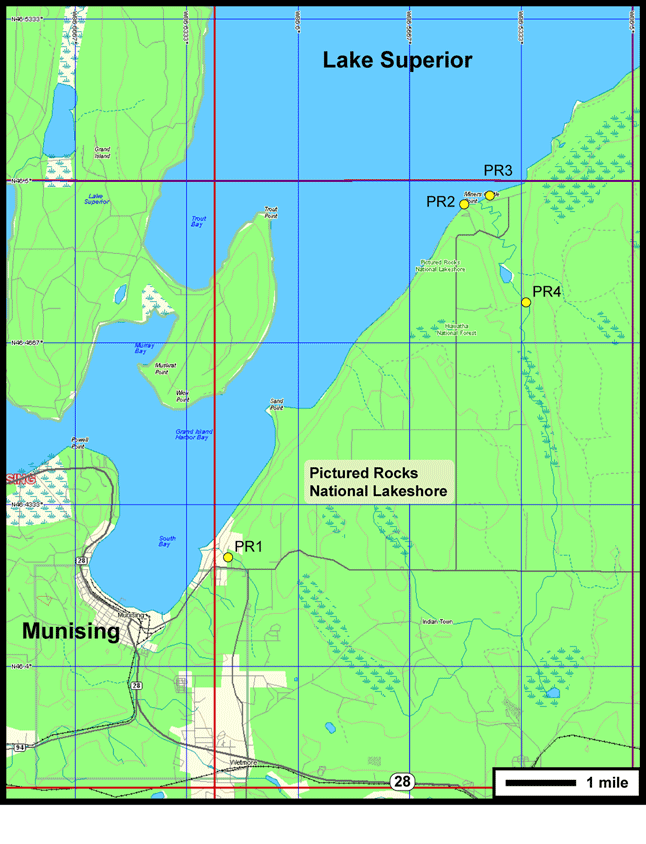 You are at PR2 and PR3.
You are at PR2 and PR3.
| Tours | Photos | Videos | References | Maps | PR Home | Home |